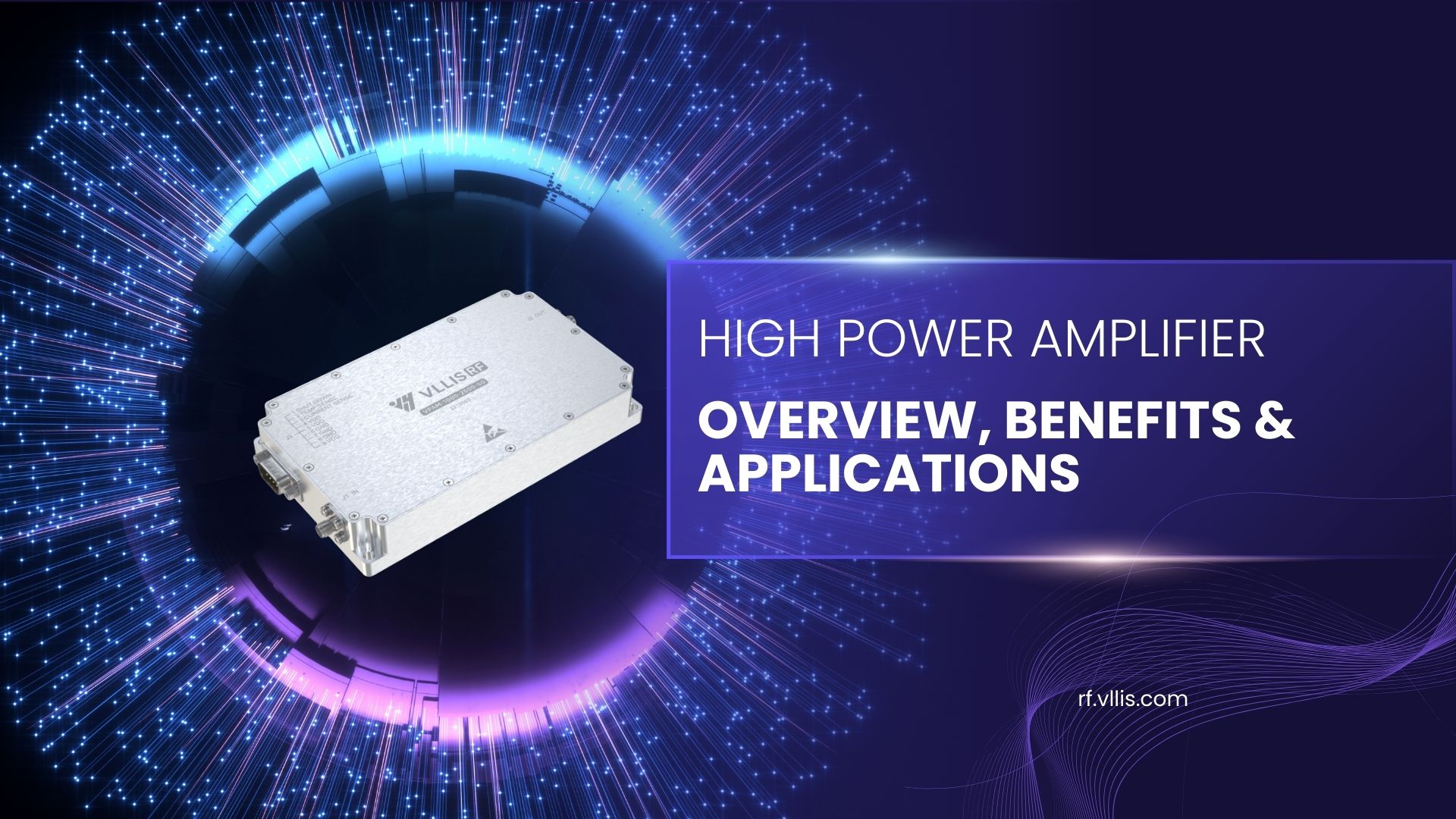Introduction
A High Power Amplifier (HPA) boosts low-level RF signals to high power levels needed for long-distance transmission or driving high-power loads. HPAs are foundational in modern RF systems, providing the power backbone for communications, radar, satellite links, broadcasting transmitters and specialized industrial equipment.
Key Features of High Power Amplifiers
- Wide Frequency Range: Supports MHz to multi-GHz bands for diverse applications.
- High Output Power: From hundreds of watts to multiple kilowatts.
- High Efficiency: Optimized architectures reduce energy use and heat.
- Linearity: Maintains signal fidelity for modern modulation schemes.
- Protection & Monitoring: Over-voltage, over-current, over-temperature, and VSWR protection with telemetry.
Design Considerations
Key design aspects include thermal management, power combining, impedance matching, and EMI/EMC compliance. The choice of semiconductor technology—such as GaN or LDMOS—directly affects power density and efficiency.
Application Scenarios
Telecommunications Systems
HPAs are critical in cellular base stations (macro and small cells), microwave backhaul and satellite ground stations. They ensure wide coverage, signal robustness, and high throughput required by modern networks.
Radar Systems
In both military and civilian radar, HPAs supply high-energy pulses for detection and imaging. Applications include long-range surveillance, weather radars, and air-traffic control.
Satellite Communication
For uplink transmitters and satellite payloads, HPAs guarantee sufficient EIRP (effective isotropic radiated power) to maintain reliable satellite links for TV distribution, broadband and telemetry.
Broadcasting
Broadcast transmitters for FM/TV rely on HPAs to cover large regions with high-quality audio and video. Linearity and spectral purity are critical to meet regulatory standards and viewer expectations.
Industrial & Medical
HPAs drive RF heating systems, plasma generators, and medical devices like MRI transmitters or RF ablation tools, where controlled high-power RF output is required.
Future Trends
- GaN Adoption: Gallium Nitride devices provide higher power density and efficiency.
- Integration & Miniaturization: More functions packed into smaller HPA modules.
- Smart HPAs: Built-in diagnostics, remote monitoring, and predictive maintenance.
- Green Design: Focus on energy efficiency and reduced environmental impact.
Conclusion
High Power Amplifiers (HPAs) are essential across telecommunications, defense, satellite communications, broadcasting and industrial applications. Advances in semiconductor technology, thermal design, and system integration continue to expand HPA capabilities—delivering higher power, better efficiency, and smarter operation. For organizations seeking custom RF solutions, partnering with experienced HPA providers ensures optimal performance and reliability.
Keywords: High Power Amplifier, HPA, RF Power Amplifier, GaN HPA, Satellite Communication, Radar Systems.
